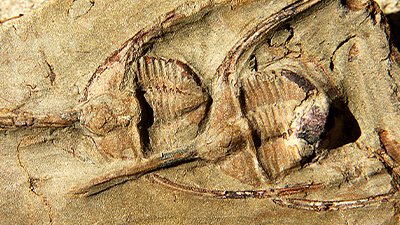Teeth When There Should Be None
BBC News: “Fossils belong to new great ape”
A collection of nine fossilized teeth found in Ethiopia is overturning previous evolutionary thought, reports the BBC. The teeth are thought to have been from a previously unknown species of great ape, named Chororapithecus abyssinicus by the team reporting on the find in Nature.
The fossils, believed to be 10 million years old, “raise questions on current theories of human evolution” because previous evolutionary genetic research has suggested gorillas and humans diverged from a common ancestor “only” eight million years ago. These fossils’ 10-million-year age
led the research team to suggest that the split must have happened earlier than 10.5 million years ago. If correct, molecular and DNA studies will need to be revisited.
Some feel the apple cart is being upset a bit too fast, however; Peter Andrews of London's Natural History Museum lamented, “It is stretching the evidence to base a time scale for the evolution of the great apes on this new fossil.” In a revealing admission, Andrews added that “the fossil evidence for the evolution of our closest living relatives, the great apes, is almost non-existent.”
We have little doubt that evolutionists will eventually re-work the evidence (as usual—for example, see item of the August 11 News to Note) into a time frame they can agree (mostly) on; however, each time their theories are stretched, we would hope that others would lose confidence in the predictive power of evolutionary models of paleontology.
[T]he fossil evidence for the evolution of our closest living relatives, the great apes, is almost non-existent.
The Bible gives us a clear understanding of these fossils. Whether they are teeth from an extinct ape or malformed teeth from a living species of ape, the fossils were formed within the past few thousand years and are the remains of an animal whose ancestors, if any, were ape and whose lineage was ape.
Meanwhile, northwest of the simian dental discovery, archaeologists have run across a footprint in Egypt that “might be the oldest human footprint ever found.” The outlined footprint, in mud that has since turned to stone, “could go back about two million years” according to Egypt antiquities council chief Zahi Hawass; another council member quickly upped the ante and suggested the print could pre-date Lucy’s estimated 3.2 million years.
Footprints haven’t worked out too well for evolutionists in the past, but we will wait to hear the verdict once these prints are “dated” officially.
For more information:
Remember, if you see a news story that might merit some attention, let us know about it! (Note: if the story originates from the Associated Press, Fox News, MSNBC, the New York Times, or another major national media outlet, we will most likely have already heard about it.) And thanks to all of our readers who have submitted great news tips to us.
(Please note that links will take you directly to the source. Answers in Genesis is not responsible for content on the websites to which we refer. For more information, please see our Privacy Policy.)
Recommended Resources

Answers in Genesis is an apologetics ministry, dedicated to helping Christians defend their faith and proclaim the good news of Jesus Christ.
- Customer Service 800.778.3390
- © 2024 Answers in Genesis








